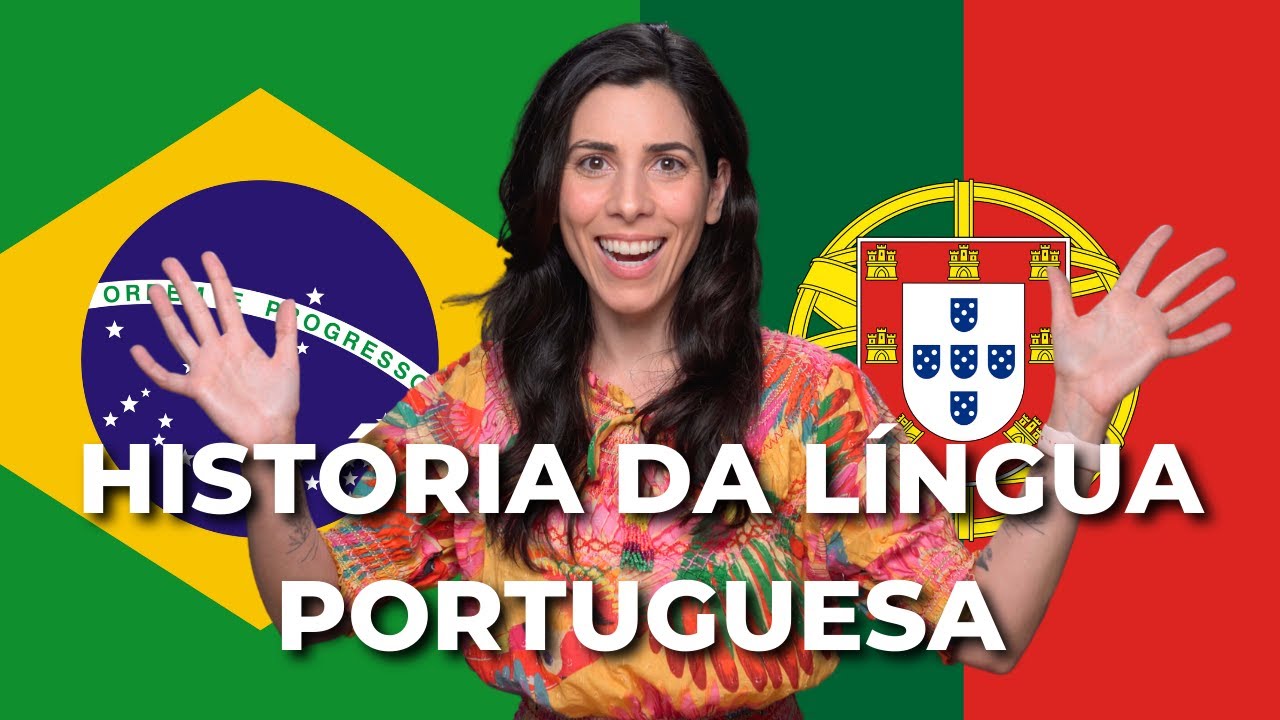To celebrate Carnival, I’ve prepared a free lesson using the lyrics of a samba so you can learn Portuguese in a fun way. This is my Carnival gift to you!
Fill out the form below to download your worksheet.
The History of Brazilian Carnival
Olá, queridos alunos! (Hello, dear students!)
This is Virginia, your Brazilian teacher.
Carnival is celebrated in many parts of the world, but there’s no Carnival like Brazil’s.
With the joy of the Brazilian people and the energy of samba, Brazil’s Carnival has become the biggest and best in the world!
But how did Carnival make its way to Brazil?
Let’s start from the beginning.
The Origins of Carnival
Carnival doesn’t have a single place of origin, as it emerged from various pagan festivities in ancient times, such as the Roman Saturnalia and the Greek Dionysian festivals, which were celebrations in honor of the gods Saturn and Dionysus. These festivities involved food, drinks, music, and the reversal of social roles.
In the Middle Ages, the Catholic Church incorporated these festivities and turned them into a pre-Lent celebration, a 40-day period of abstinence.
Carnival allowed people to enjoy the days leading up to Lent by eating plenty of meat, among other things. In Latin, “carne levare”, which gave rise to the word “Carnival,” means “to remove meat.” In a way, Carnival was a farewell celebration to meat.
The modern Carnival, with parades, costumes, and street parties, began to take shape during the Middle Ages and spread across Europe.
How did Carnival arrive in Brazil?
Carnival arrived in Brazil under the name “Entrudo”, brought by the Portuguese during colonization. “Entrudo” was very popular in Brazil between the 17th and 19th centuries. It was a chaotic celebration where people threw water and flour at each other.
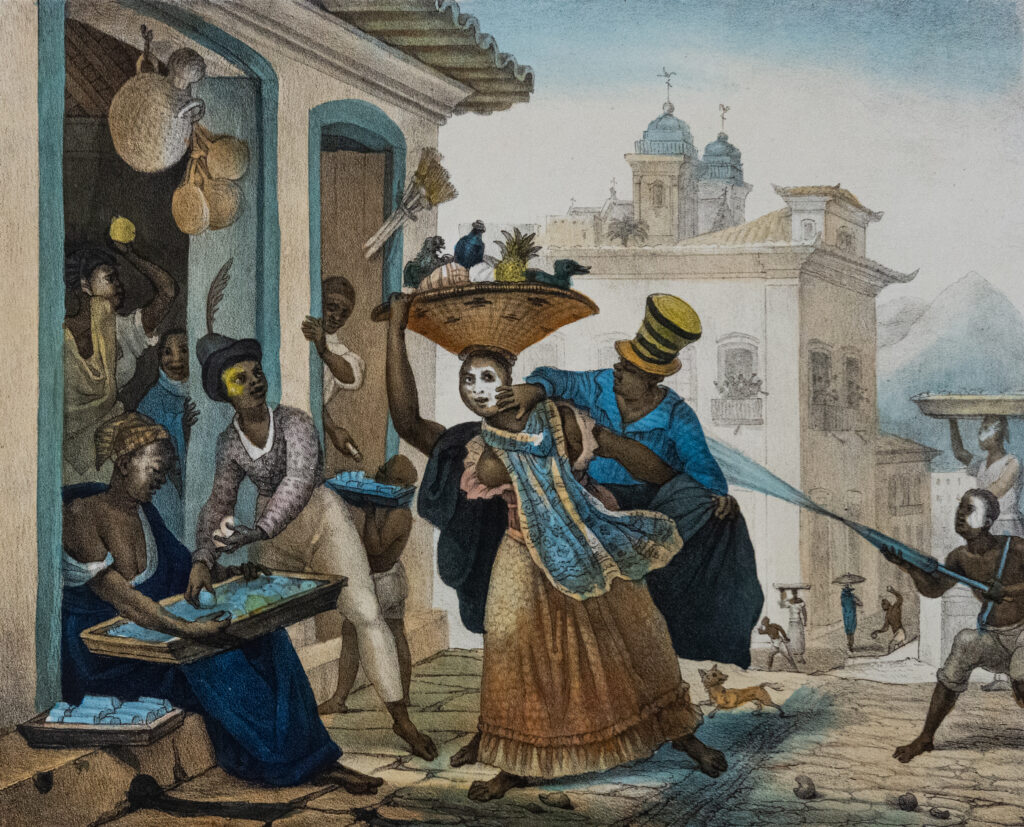
In the 19th century, “Entrudo” started to fade away, giving way to other celebrations considered more “civilized” and controlled. It was at that time that masquerade balls emerged, inspired by the Venice Carnival.
While the masquerade balls were reserved for Brazil’s elite, other popular festivities also emerged in the 19th and early 20th centuries, such as “cordões” and “ranchos”.
The cordões were parades that resembled religious processions but with a festive atmosphere, featuring costumes, percussion, and popular traditions like the “zé-pereiras”, musicians who played large drums.
The ranchos evolved from the “cordões”. They were more organized parades, with decorated carts, music, and costumed participants led by a king and queen who headed the parade.
The “cordões” and “ranchos” played a fundamental role in the origins of today’s samba schools. I’ll talk about samba schools in a bit.
During the 19th century, other popular cultural expressions also started to emerge in different regions of Brazil. In Bahia, “afoxé” appeared, a cultural tradition of African origin. “Afoxé” groups played and sang to the rhythm of “ijexá”, an Afro-Brazilian musical genre linked to “candomblé”.
Around the same time, “frevo”, a folkloric dance, began taking over the streets of Recife, and “maracatu”, another Afro-Brazilian tradition, became especially strong in Recife and Olinda.
“Afoxé”, “frevo”, and “maracatu” have stood the test of time and are still common in Brazil today.
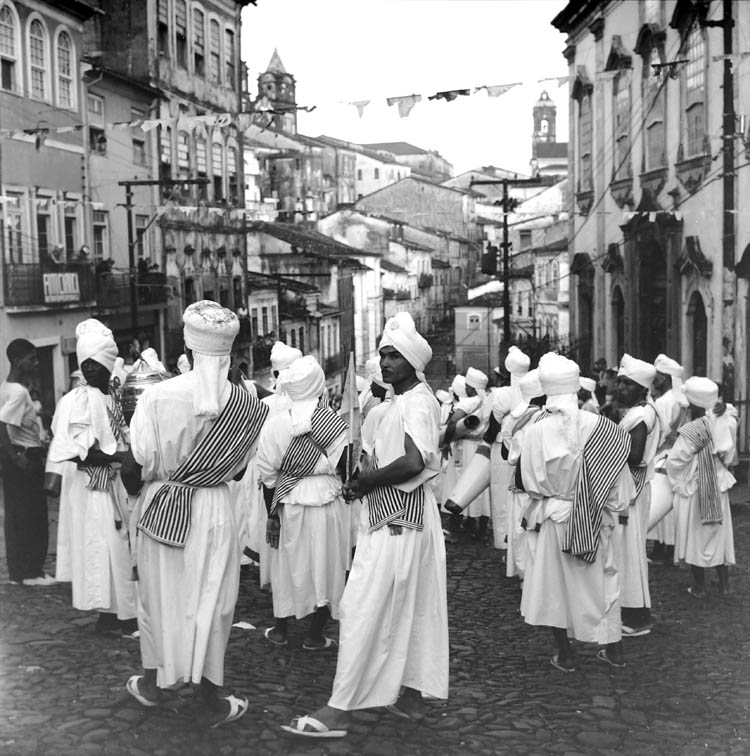
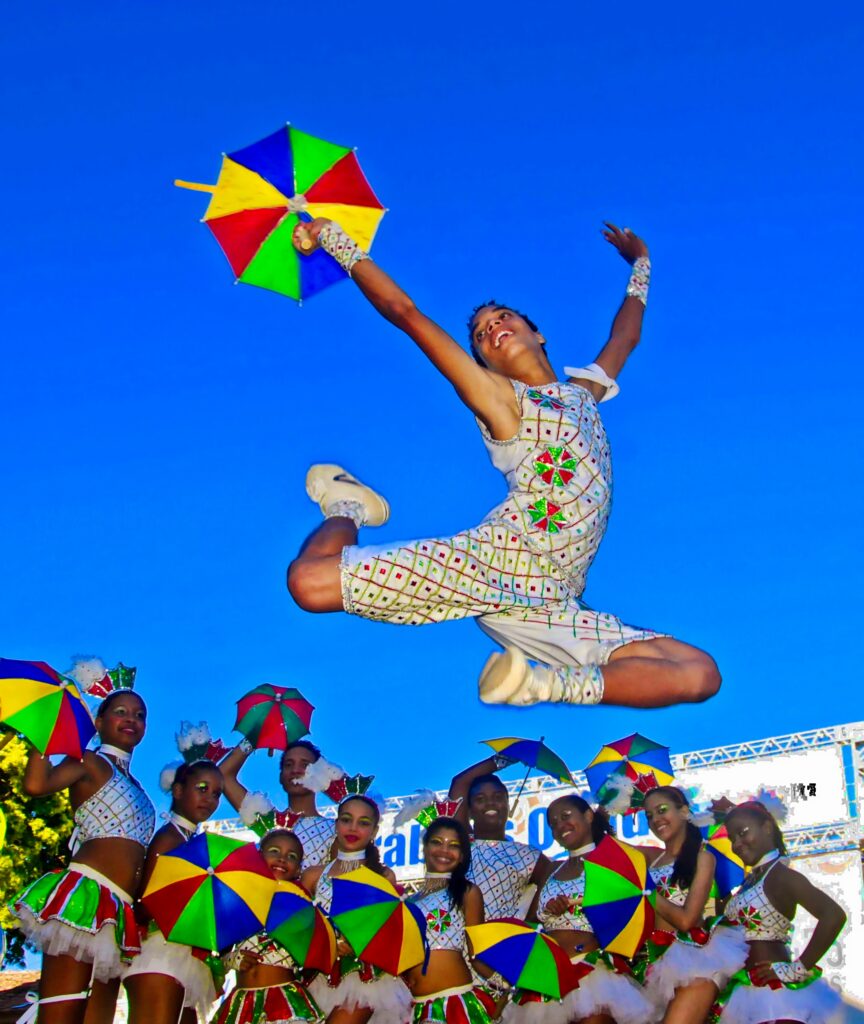
https://en.wikipedia.org/wiki/Frevo

https://en.wikipedia.org/wiki/Maracatu
How was samba born?
It’s impossible to talk about Brazilian Carnival without mentioning samba!
But did you know that the first music associated with Brazilian Carnival wasn’t samba? In the 19th century, one of the most popular rhythms during Carnival was the polka, a European musical style that became widely popular in Brazil.
The famous “marchinhas de Carnaval” emerged at the end of the 19th century. “Marchinha” is a Brazilian musical style with elements of European genres like polka and “dobrado”. “Marchinhas” have playful lyrics, cheerful melodies, and a lively rhythm.
The first “marchinha” was composed by Chiquinha Gonzaga in 1899 and was called “Ô Abre Alas.” 🎶 “Ô abre alas que eu quero passar…” 🎶
It’s impossible to be Brazilian and not know this song!
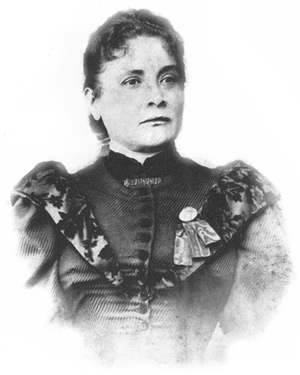
“Marchinhas” became the main rhythm of Brazilian Carnival until the 1960s when they were replaced by “samba-enredo” in samba schools and by other styles in carnival blocks like “Axé”. But even today, “marchinhas” are still very popular at Carnaval parties.
And when was samba born?
As Vinícius de Moraes said in his song “Samba da Bênção”:
““…o samba nasceu lá na Bahia, e se hoje ele é branco na poesia, ele é negro demais no coração” (… samba was born in Bahia, and if today it is white in poetry, it is deeply black at heart).
I love this song. Here, Vinícius alludes to samba’s African roots. It’s estimated that samba was born in Bahia at the end of the 19th century, a mix of Afro-Brazilian rhythms that became one of Brazil’s greatest cultural expressions.
But even though its roots are in Bahia, samba truly took shape in Rio de Janeiro. The first recorded and registered samba was created by Donga in 1916 and was called “Pelo Telefone” (Over the Phone.)
Escolas de Samba (Samba Schools)
In the early 20th century, the famous “escolas de samba” (samba schools) emerged, which are associations or community clubs that aim to represent their community through music and dance. During Carnival, they compete against other “escolas de samba” in spectacular parades.
The first “escola de samba”, “Deixa Falar,” was founded in Rio de Janeiro in 1928. Rio’s samba schools are the most famous, but they exist all over Brazil. I love watching the parades. Click this link to check them out.
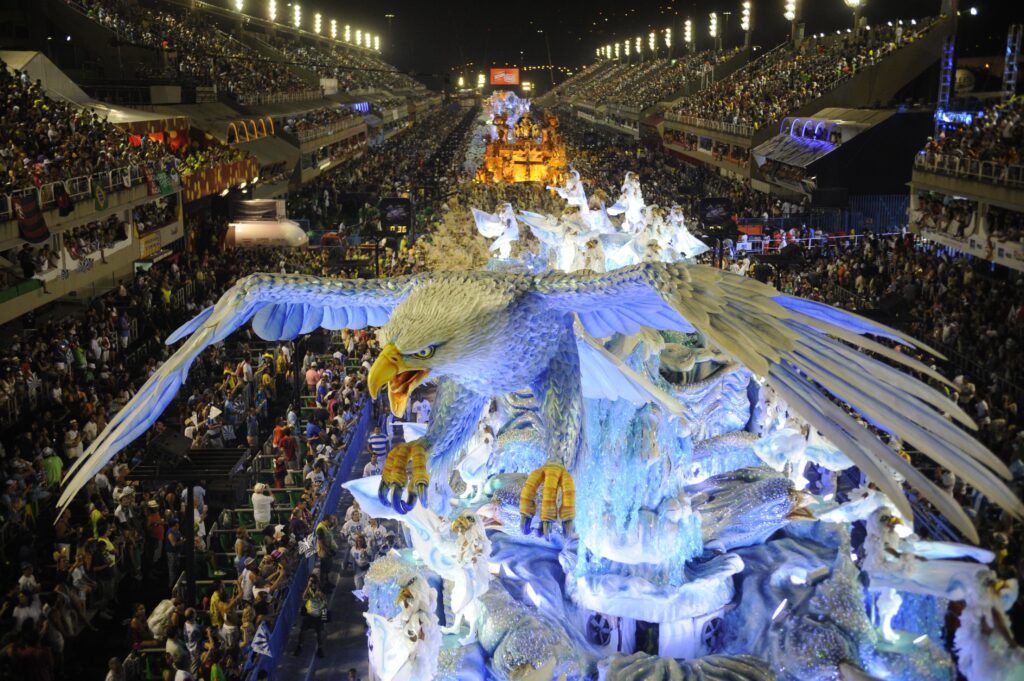
Fernando Frazão/Agência Brasil – https://pt.wikipedia.org/wiki/Carnaval_do_Rio_de_Janeiro#/media/Ficheiro:Desfile_Portela_2014_(906185).jpg
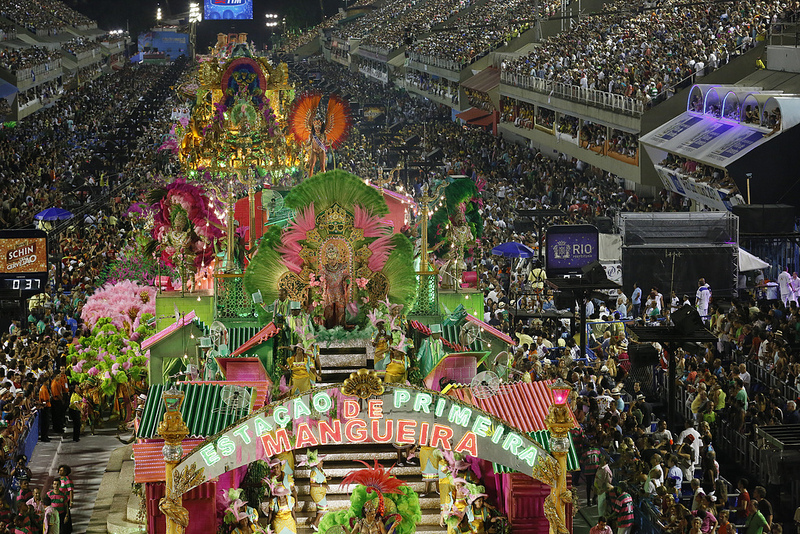
Agência Brasil/Marco Antonio Cavalcanti – https://pt.wikipedia.org/wiki/Carnaval_do_Rio_de_Janeiro#/media/Ficheiro:Mangueira_2013_130211.jpg
Blocos e Trios Elétricos
But Carnival doesn’t just happen in the “sambódromos”! While “escolas de samba” were gaining popularity in Rio, iconic carnival blocks were emerging in Pernambuco, like “Homem da Meia-Noite”, created in 1931, which still parades through the hills of Olinda to this day.
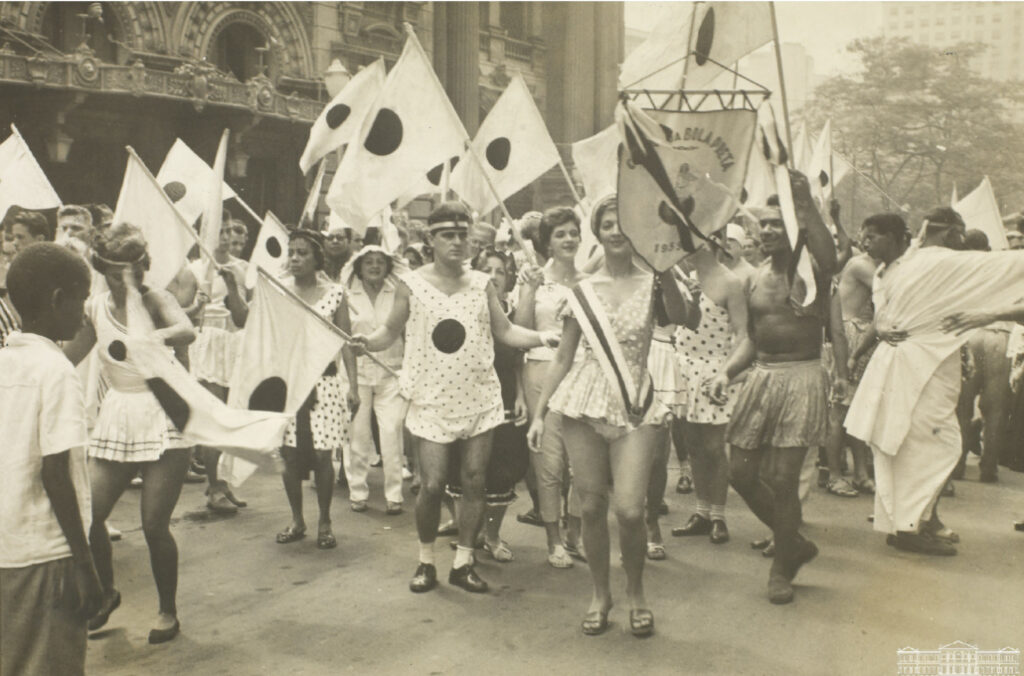
And in Bahia, street Carnival went through a true revolution in 1951 with the creation of “trios elétricos” by Dodô and Osmar. This invention transformed the celebration, bringing live music to the streets and drawing massive crowds behind the carnival blocks.
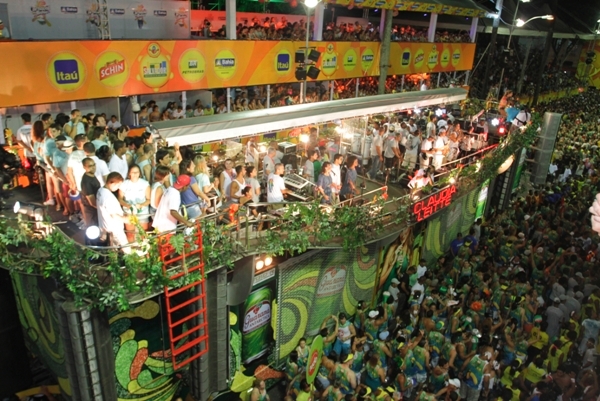

Brazilian Carnival Today
Today, Brazilian Carnival is the biggest popular festival in Brazil, and in the world.
In 2024, an estimated 11 million revelers took part in Salvador’s Carnival. And it’s not just Brazilians who love our Carnival: In 2024, Brazil welcomed around 230 thousand foreign tourists during Carnival. It’s a week of nonstop celebration all across the country.
A fun fact: Carnival symbolically marks the real start of the year in Brazil!
When we live in Brazil, it really feels like the year only starts after Carnival. Why? Well, January is summer vacation, and in February, everyone is looking forward to the big Carnival holiday. That’s why it’s so common to put off starting important projects until after Carnival.
I’ve already made another video about Carnival vocabulary. Click here to check it out!
Até a próxima!
Virginia & Speaking Brazilian Team
Free PDF!
To celebrate Carnival, I’ve prepared a free lesson using the lyrics of a samba so you can learn Portuguese in a fun way. This is my Carnival gift to you!
Fill out the form below to download your worksheet.
Online Brazilian Portuguese Courses
If you enjoyed this lesson, you’ll love our courses! At Speaking Brazilian School, we offer digital courses, small group classes, and private lessons. Click here to learn more about our Brazilian Portuguese online classes.
Media sources and attributions for video and lesson The Fascinating History of Brazilian Carnival
Music “Ó Abre Alas Que Eu Quero Passar”
Channel – MK Nuwtri
Vídeo – https://www.youtube.com/watch?v=m_vaRKqCDYM
Chiquinha Gonzaga – https://commons.wikimedia.org/wiki/Category:Chiquinha_Gonzaga
Maracatu – https://en.wikipedia.org/wiki/Maracatu
Frevo – https://en.wikipedia.org/wiki/Frevo
Zé Pereira – https://pt.wikipedia.org/wiki/Z%C3%A9_Pereira#/media/Ficheiro:Treboada_do_baixo_minho.jpg
Samba Schools –
Portela – Fernando Frazão/Agência Brasil – https://pt.wikipedia.org/wiki/Carnaval_do_Rio_de_Janeiro#/media/Ficheiro:Desfile_Portela_2014_(906185).jpg
Mangueira – Agência Brasil/Marco Antonio Cavalcanti – https://pt.wikipedia.org/wiki/Carnaval_do_Rio_de_Janeiro#/media/Ficheiro:Mangueira_2013_130211.jpg
Ranchos –https://ranchoscarnavalescos.com/ranchos-carnavalescos/
Masquerade ball at Theatro Lyrico by Guerave, 1883 –
https://brasilianafotografica.bn.gov.br/?tag=serie-o-rio-de-janeiro-desaparecido&paged=2 http://www.aentrudeira.com.br/2016/01/primeiro-baile-de-mascaras.html
“Trio elétrico” –
Claudia Leitte: https://commons.wikimedia.org/wiki/Category:Trios_el%C3%A9tricos#/media/File:MG_2031ag_fred_pontes.JPG
Afoxé – Afoxé Filhos de Gandhi no carnaval de Salvador, c.1964. Bahia, Brazil. Photos by Marcel Gautherot / IMS collection https://ims.com.br/por-dentro-acervos/manda-descer-pra-ver/


